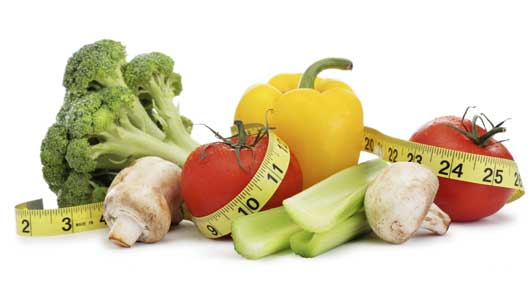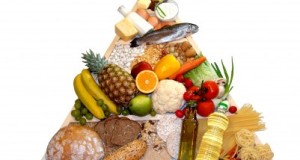
Weight loss can be achieved much faster by lowering blood sugar levels. Certain foods increase blood sugar levels when ingested. Elevated blood sugar levels cause the body to produce insulin, a hormone that helps glucose get into cells where it can be used for energy. Too much insulin secretion prevents the body from using fat for energy. In short, increased levels of insulin will make you fat and make sure you stay fat. Research shows that prolonged exposure to elevated levels of insulin can cause high triglycerides, high “bad” LDL cholesterol, low “good” HDL cholesterol, high blood pressure, insulin resistance, increased appetite, obesity and risk of developing or exacerbating type 2 diabetes. For faster weight loss it is necessary to lower blood sugar levels and insulin production.
The Glycemic Index (GI) is a numerical scale used to indicate how fast and how high a particular food can raise our blood glucose (blood sugar) levels. A food with a low GI will typically prompt a moderate rise in blood glucose, while a food with a high GI may cause our blood glucose levels to increase above the optimal level.
Many high carbohydrate foods, even wholesome foods such as fruits, starchy vegetables, breads, grains and rice can raise blood sugar levels. This is called a glycemic response. A person’s glycemic response to a specific food also depends on the other foods eaten along with it.
Combining simple or complex carbohydrates with protein, healthy or “good” fats, and plenty of fiber at every meal and snack reduces the overall glycemic index of these carbohydrates, keeping blood glucose levels on an even keel, This enables insulin levels to remain much lower, increasing fat utilization which will result in faster weight loss. For example, a banana has a really high glycemic index when consumed alone. Add a handful of walnuts or a tablespoon or two of nut butter and the overall GI of this healthy snack will be dramatically lower.
Choosing low-GI foods at just one meal will not help keep your blood sugar at a healthy level permanently. For your best chances of good blood sugar control, you will need to consistently choose meals and snacks with a good overall low GI.
Consulting with a health and fitness professional who can provide examples of GI lowering combinations with a strength training and cardiovascular exercise program specific to weight loss will help you maintain a healthy GI which will accomplish weight loss goals much faster and may help prevent long-term health issues.

Source by Natalie Gibbins
 Vitamin Agent The Health & Naturalistic Source
Vitamin Agent The Health & Naturalistic Source




